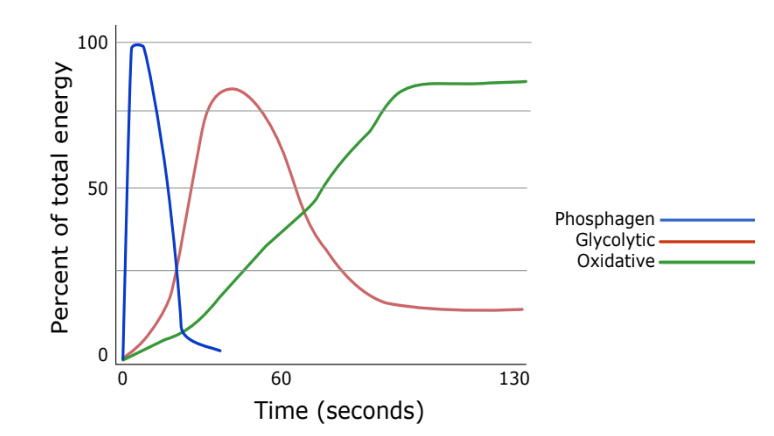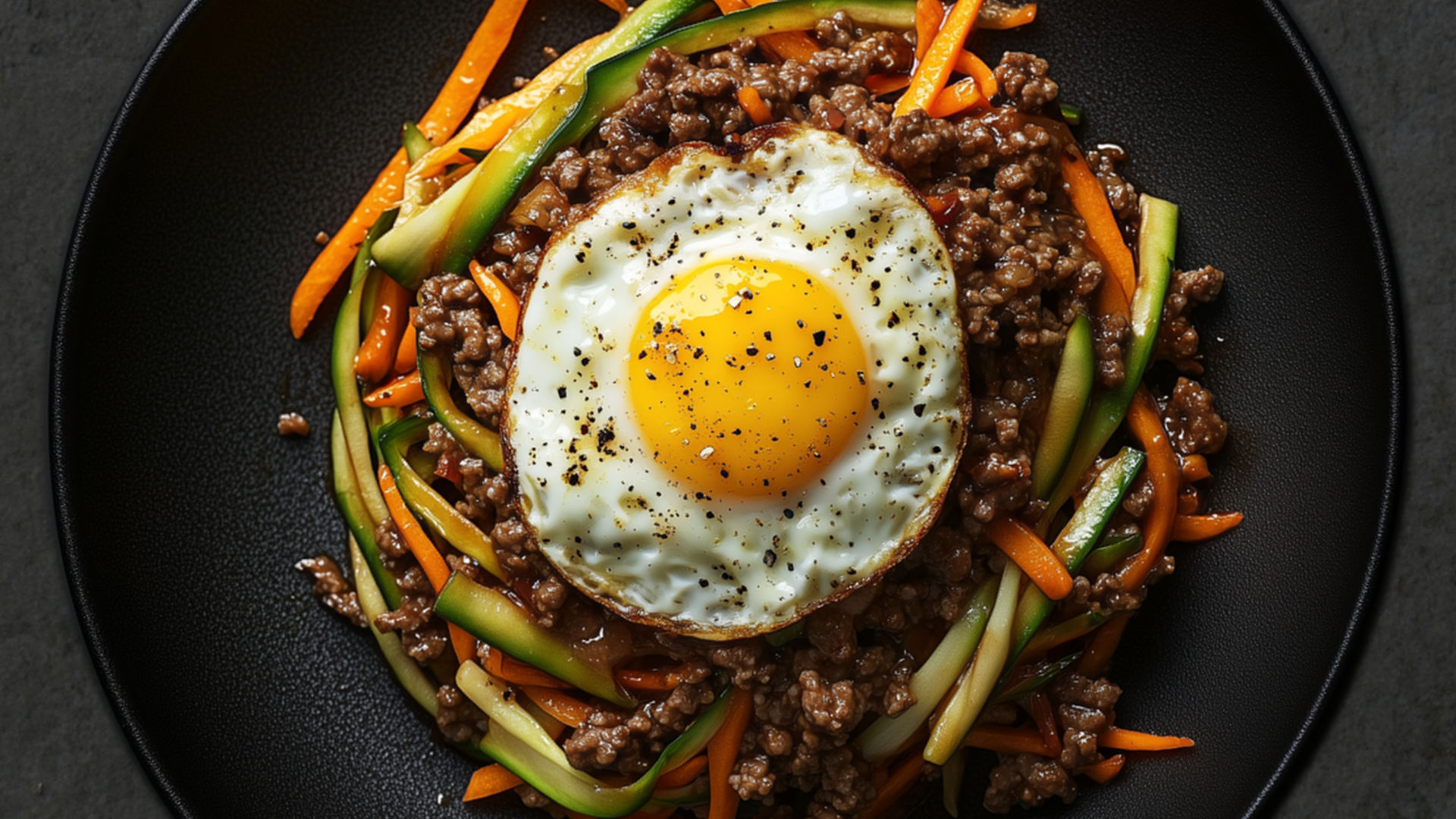The
Daily
Fix
Rest
Beef & Veggie Bowl with Sriracha and Fried Egg
Metabolic Conditioning

Rest day
Ground beef browned with tangy zucchini and carrots, topped with a spicy sriracha sauce and a crispy fried egg.
The distinctions between aerobic and anaerobic exercise, and interval training
Enjoy the recovery time, or make-up anything you missed from last week.
Ingredients
6 oz ground beef
½ small zucchini, julienned or thinly sliced
¼ cup carrot, julienned or shredded
1 Tbsp white vinegar
1 Tbsp soy sauce or coconut aminos
1 Tbsp butter (for cooking)
1 egg
Salt and pepper, to taste
For the Sriracha Sauce:
2 Tbsp avocado oil mayonnaise
1 tsp hot sauce
½ tsp smoked paprika
¼ tsp garlic powder
¼ tsp apple cider vinegar
Macronutrients
Protein: 40g
Fat: 48g
Carbs: 5g
Preparation
In a small bowl, combine the julienned carrot (¼ cup) and the julienned zucchini (½ small) with the white vinegar (1 Tbsp) and set aside to soak for 10 minutes to slightly soften and infuse flavor.
In another small bowl, mix the mayonnaise (2 Tbsp), hot sauce (1 tsp), smoked paprika (½ tsp), garlic powder (¼ tsp), and apple cider vinegar (¼ tsp) to create the keto sriracha sauce. Set aside.
Heat a skillet over medium heat and melt the butter (1 Tbsp). Add the ground beef (6 oz) to the skillet and season with salt and pepper. Cook for 4–5 minutes, breaking it up with a spatula, until browned.
Drain any excess liquid if necessary, then add the soaked zucchini and carrots to the beef along with the soy sauce or coconut aminos (1 Tbsp). Stir everything together and cook for another 2–3 minutes until the vegetables are tender but still slightly crisp.
In a separate small pan, fry the egg (1) to your preferred doneness, seasoning lightly with salt and pepper.
Plate the beef and vegetable mixture in a bowl, drizzle generously with the sriracha sauce, and top with the fried egg. Serve hot.
"Metabolic training refers to conditioning exercises intended to increase the storage and delivery of energy for any activity.
There are three distinct biochemical means by which energy is provided for all human action. These “metabolic engines” are known as the phosphagen pathway, the glycolytic pathway, and the oxidative pathway.
The first, the phosphagen pathway, provides the bulk of energy used in highest-powered activities, those that last less than ten seconds.
The second, the glycolytic pathway, dominates moderate-powered activities, those that last up to several minutes.
The third, the oxidative pathway provides energy for low-powered activities, those that last in excess of several minutes."

MONDAY 250714